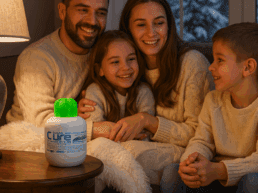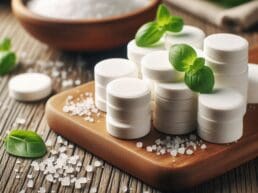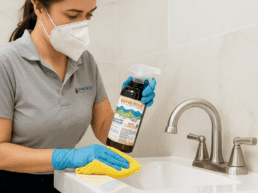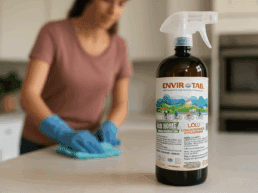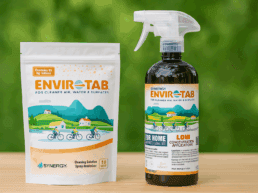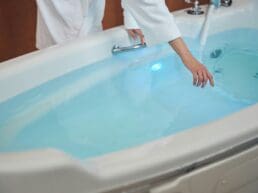
No Wonder it is Referred to as the 'Miracle Molecule'...
What Makes ClO2 So Special?
ClO2: 200 Years of Benefits to Society, Industry and Health
Chlorine dioxide (ClO₂) has long been recognized for its powerful disinfecting properties, but its applications extend far beyond water treatment. This repository page is to serve as a place to peruse scientific studies, articles, and expert analyses on ClO₂’s prevalence in the environment, its chemical properties, and its potential benefits to society and human health. Whether you are a researcher, healthcare professional, EVS Manager or simply curious about this compound, you’ll find valuable insights into its uses, safety, and impact. Explore the latest findings and discover how ClO₂ is shaping industries and improving lives.
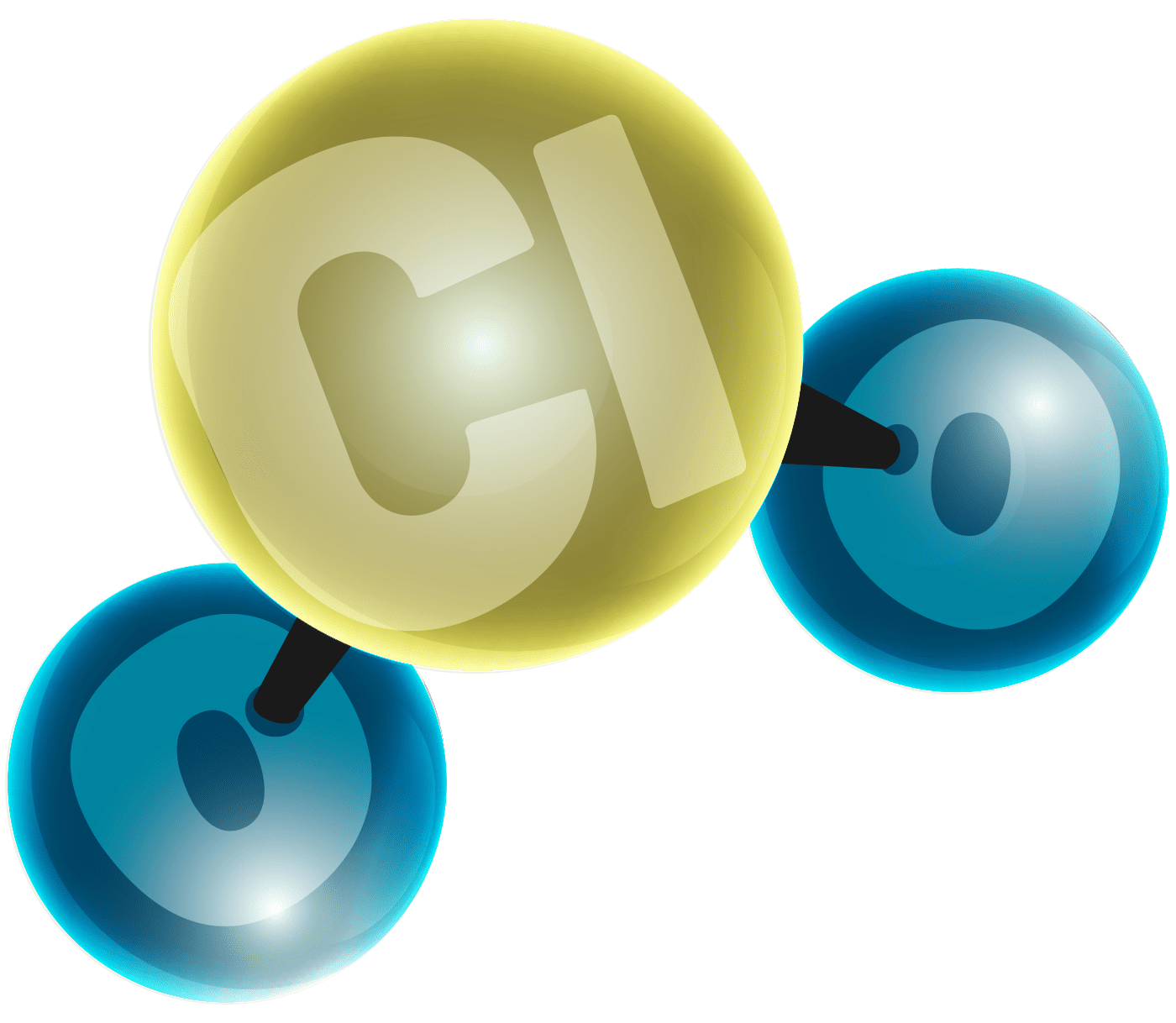
Chlorine Dioxide: Prevalent, Stable and Naturally Occurring
Chlorine dioxide (ClO₂) is a naturally occurring compound that can be found in small amounts in the environment. It is produced by the reaction of chlorine with oxygen in the presence of sunlight or by the oxidation of chloride ions in water. ClO₂ is suspected as being the material contained in and released by our own white blood cells - hence is part of our own natural defenses. It is a potent oxidizing agent, used in everywhere from paper mills to surgical suites and may be harmful in high concentrations (when generated in industrial settings), but the low levels of ClO₂ found in the environment and used in cleaning, deodorizing and sanitizing, are generally not considered harmful to human health.
ClO₂'s Unique Value as a Disinfectant
ClO₂ is widely used for water treatment due to its ability to kill bacteria, viruses, and other microbes without hydrolyzing. This means that it is not degraded by its presence in water, it remains in a gaseous state even in an aqueous solution of water.
ClO₂'s Unique Value as a Cleaning Agent
ClO₂ Chlorine dioxide (ClO2) is a powerful oxidizing agent that has the ability to break down proteins and other organic compounds that can act as obstacles to proper soil removal and germ control. When ClO₂ comes into contact with organic matter, it reacts with the molecules and breaks them down into smaller, more easily removable components. This ability to break down proteins and other organic compounds makes ClO₂ an effective disinfectant and sanitizer. In addition to its oxidizing properties, ClO₂ also has a high level of penetration, allowing it to reach and destroy germs and bacteria that may be hiding in hard-to-reach areas. Because of its ability to break down proteins and other organic matter, ClO₂ is often used in a variety of applications where thorough cleaning and disinfection are required. This includes water treatment, food processing, and medical facilities, among others. Overall, the ability of ClO₂ to break down proteins and other obstacles to proper soil removal and germ control makes it a valuable tool in maintaining clean and sanitary environments.
ClO₂'s Unique Value in Odor Control
Chlorine dioxide (ClO2) is a powerful oxidizing agent that works by breaking down odor-causing molecules in the air. When ClO₂ comes into contact with these molecules, it reacts with them and neutralizes their odor, effectively deodorizing the air space. ClO₂ is highly effective at eliminating a wide range of odors, including those from smoke, pets, and food.
Properties:

ClO₂: Safe & Stable When Used Properly
When ClO₂ is kept at or below 400ppm and used for cleaning, deodorizing, and sanitizing, it is considered safe for human health. At this concentration, ClO₂ is effective at killing bacteria, viruses, and other pathogens without posing a significant risk to humans. It is important to follow proper dilution and application guidelines to ensure that ClO₂ is used safely and effectively. Additionally, proper ventilation should be maintained when using ClO₂ at concentrations over 200ppm to prevent any potential respiratory irritation.
ClO₂: Stability in Gaseous Form
Chlorine dioxide (ClO2) is a stable gas due to its molecular structure, which consists of two oxygen atoms and one chlorine atom. This structure gives ClO₂ its stability and resistance to hydrolysis with water. Unlike other chlorine-based compounds, ClO₂ does not readily react with water to form hypochlorous acid or other byproducts.
This stability allows ClO₂ to maintain its sanitizing properties in various environments, including air, water, and on surfaces. When ClO₂ is introduced into water or air, it can effectively kill bacteria, viruses, and other pathogens by disrupting their cell membranes and inhibiting their metabolic processes. A very important point is how effective ClO₂ is at breaking down biofilms and removing organic contaminants.
On surfaces, ClO₂ can be applied as a disinfectant or sanitizer to kill harmful microorganisms and prevent the spread of infections. Its stability ensures that it remains active and effective for an extended period, providing long-lasting protection against pathogens.
Overall, the stability of ClO₂ as a gas allows it to maintain its sanitizing properties in various environments, making it a versatile and effective disinfectant for a wide range of applications.
Got Questions?
Videos that Answer Some FAQ's about ClO2
Is ClO2 Safe for Home and Office Use?
What Types of Odors will ClO2 Eliminate?
What Makes ClO2 a Better Sanitizing Partner for Microfiber?
How Can I Use ClO2 to Eliminate Allergens from My Home?
Can ClO2 Make a Home or Office Cleaner or Safer?
Can ClO2 be Used to Get Foul Odors Out of Clothes?
Blogs that May Help You Better Understand ClO2
Got Questions?
Studies & Scholarly Articles on Chlorine Dioxide
Can Low-Dose, Gaseous ClO2 Help Prevent the Spread of Communicable Diseases?
From The Abstract: In this editorial, we propose to consider the possibility of developing and implementing antiviral protocols by applying high purity aqueous chlorine dioxide (ClO2) solutions. The aim of this proposal is to initiate research that could lead to the introduction of practical and effective antiviral protocols.
What is the Efficacy to Safety Evaluation of ClO2 when used to Clean, Sanitize & Disinfect?
From The Conclusion: Doses of from 50ppm to 200ppm of ClO2 were studied to see how each would perform in laboratory settings in regard to microbial efficacy and cellular toxicity. A broad array of studies were conducted and it was concluded that ClO2 is more than satisfactorily effective as a biocide while underrated as to its safety.
Can ClO2 Be Used instead of Normal Antiviral, Antibacterial & Antifungal Agents?
From The Study Body: 'It has been demonstrated clinically that CLO2 is highly effective in accelerating wound healing with particular applications to burns. There may at first be no apparent explanation for such a relationship, but careful biochemical analysis has revealed a mechanism of action relating CLO2 to wound healing.'
Is there a comprehensive list of the pathogens against which ClO2 has been proven effective?
From the Introduction: Chlorine Dioxide is a most unique molecule, being deliverable in both a gaseous and gas-in-water solution. In each form, it has been proven to be highly effective against all classifications of pathogens: protozoan, fungi, bacteria, viruses and spores. Over the decades, extensive testing has been done to validate the biological efficacy of this amazing molecule.
The list below is a good representation, but by no means is exhaustive, and the chart at the left is provided to assist the reader in understanding the degree of difficulty for each classification of organism, and it should be noted that the concentration necessary to dispatch the classes will vary.
Can chlorine dioxide prevent the spreading of coronavirus or other viral infections?
From the Conclusion: the unique properties of chlorine dioxide, which make it an ideal and nonspecific antimicrobial agent at concentrations harmless to humans, and we reviewed previous research on preventing viral infections with gaseous ClO2 . Based on this background, we suggested some novel hypothetical methods using chlorine dioxide to disinfect rooms, prevent human infection, and slow down viral spread. These are nonspecific methods, which could be used against any newfound virus as a first line of protection until effective specific countermeasures are developed.
Is ClO2 the Best Means of Sanitizing Water provided to Poultry and Other Livestock?
A Quote from the Author: One of the biggest reasons I like CLO2 technology over other products is because of CLO2’s ability to be a selective’ oxidizer when working in your water system. As I mentioned earlier CLO2 has 2.5 times the oxidation capacity compared to Chlorine or stabilized Hydrogen Peroxide. The reason CLO2 has 2.5 times the capacity is because CLO2 is a ‘selective’ oxidizer meaning it is not greatly affected by ‘organic matter’ or other containments in the water which allows it to be useful at much lower ppm’s or dilutions in your water system.
Is there any known benefit to treating fruits and vegetables with ClO2?
From the USDA Article: Chlorine dioxide gas provides a much greater antimicrobial effect compared to currently used sanitizers and antimicrobial processing systems. The use of chlorine dioxide gas, when conditions are optimized, should provide a far better alternative for treating fruit and vegetable products. In turn, it is expected that produce will be safer and have a longer shelf-life. This provides benefits to the public health sector and economically to the produce industry.
An article: 10 Reasons Why You Should be Using Chlorine Dioxide for Food Safety
From the Introduction: Chlorine dioxide is one powerhouse sanitizer that is getting more attention recently as food processors look for more efficacious products to help them win the sanitation battle. Approved by the U.S. Food and Drug Administration (FDA) and the U.S. Environmental Protection Agency (EPA), it is as powerful as peracetic acid and more economical, yet it has far less of an impact on the environment than quaternary ammonium salts, chlorine or bromine, making it an excellent choice for food processing plants. It costs about the same to use as other sanitizers but is more versatile and less harmful. It’s also been shown to destroy and prevent biofilms, one of the biggest challenges to food processors in destroying harmful bacteria. It also does not have the strong odor or corrosive qualities associated with chlorine.
Will ClO2 Work to Clean Produce, and Reduce the Presence of Human Pathogens?
From the Conclusion: In summary, the efficacy of ClO2 to reduce human pathogens on the surface of lettuce leaves is limited; cross-contamination via processing water, however, can be successfully prevented. The overall positive effects recommend the application of ClO2 in fresh and fresh-cut lettuce washing systems. Suspended solids and organic matter in the water, however, enhance the protection of microorganisms against sanitation agents. Thus, the removal of dirt particles and pollution by coagulation, sedimentation and filtration is urgently necessary, and the application of ClO2 for the disinfection of lettuce washing water can be particularly advised for a second washing cycle after the thorough elimination of the pollution.
Can ClO2 be Employed to Reduce Biofilm When Flushing Dental Waterlines, Eliminating E. coli?
From the PubMed Article: Experimental results showed that chlorine dioxide disinfectants at concentrations of 20 mg/L and 80 mg/L significantly reduced the bacterial count of S. aureus and E. coli, indicating effective disinfection... After thorough research, we recommend using chlorine dioxide disinfectant at a concentration of 20 mg/L for significantly reducing bacterial biofilms in dental unit waterlines (DUWLs). This concentration also ensures satisfactory cell safety and metal corrosion resistance.
A Systematic Review of the Efficacy of ClO2 as a Broad Range Multi-Use Disinfectant...
From the Abstract: Chlorine dioxide can be effectively used to disinfect drinking water without much alteration of palatability and can also be used to destroy pathogenic microbes, including viruses, bacteria, and fungi from vegetables and fruits. Our review confirms that chlorine dioxide is effective against the resistant Mycobacterium, H1N1, and other influenza viruses. Studies generally support the use of chlorine dioxide as a disinfectant. The concentration deemed safe for usage still needs to be determined on a case-by-case basis.
Can ClO2 Be Used at Ultra-Low Concentrations and Still Be Effective in Reducing Pathogens?
From the Conclusion: The effects of humidity and illuminance on the attenuation of the ClO2 concentration were strongly synergistic. When the gas concentration was maintained below 0.9 mg/m3, the disinfection rate of ClO2 on bacteria (P. aeruginosa, V. mimicus and S. aureus)
exceeded 99.9%; thus, ClO2 gas exhibited a high disinfection efficiency. In addition, there was no corrosion to various metals by ClO2 under the same conditions. Consequently, gaseous ClO2 at ultra-low concentrations has a high sterilization efficiency and is non-corrosive to metals. Implications: Humidity and illuminance can influence decay laws of extremely low concentration ClO2 gas. The gaseous ClO2 at ultra-low concentrations has a high sterilization efficiency and is non-corrosive to metals.
SynergyGreenClean.com is Copyright ©2025 by Synergy Americas, Inc | This site is built and managed by Pilgrim Consulting & Design


